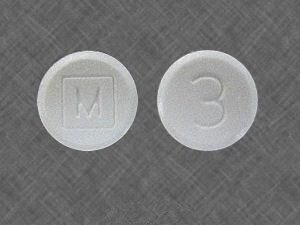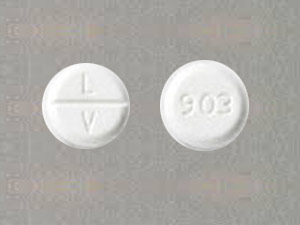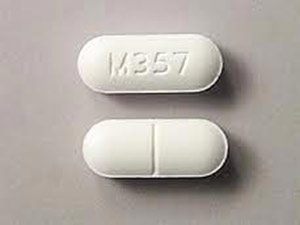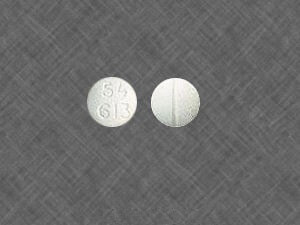Codeine 30mg tablets are a prescription-strength opioid analgesic formulated for the management of mild to moderate pain. Each tablet delivers a precise 30 mg dose of codeine phosphate, ensuring consistent, reliable relief when non‑opioid analgesics are insufficient.

Key Features & Benefits:
-
Effective Pain Relief: Targets pain signals in the central nervous system to alleviate discomfort from conditions such as musculoskeletal injuries, dental procedures, and postoperative pain.
-
Controlled Dosing: 30 mg strength offers a balanced opioid effect—stronger than over‑the‑counter options but designed to minimize risk of overmedication.
-
Rapid Onset: Typically begins to ease pain within 30–60 minutes of ingestion.
-
Well‑Tolerated Formulation: Contains inactive excipients chosen for minimal gastrointestinal irritation.
Indications:
-
Short‑term relief of acute pain when alternative treatments are inadequate.
-
Adjunct therapy in selected chronic pain conditions under close medical supervision.
Dosage & Administration:
-
Adults: 1 tablet (30 mg) orally every 4–6 hours as needed, not to exceed 360 mg (12 tablets) in 24 hours.
-
Adjustments may be necessary for elderly patients or those with impaired hepatic or renal function.
-
Swallow tablets whole; do not crush or chew.
Safety & Precautions:
-
Prescription Only: Must be used under a healthcare provider’s guidance.
-
Risk of Dependence & Abuse: Prolonged use can lead to tolerance, physical dependence, or addiction.
-
Common Side Effects: Drowsiness, nausea, constipation, dizziness.
-
Serious Warnings: Respiratory depression, especially when combined with other CNS depressants (e.g., alcohol, benzodiazepines). Do not exceed prescribed dose.
-
Contraindications: Severe asthma, gastrointestinal obstruction, known hypersensitivity to codeine.
Storage & Handling:
Store at room temperature (20–25 °C), in a dry place away from direct light. Keep out of reach of children and dispose of unused tablets responsibly.
Packaging:
Blister packs of 10 tablets or bottles of 100 tablets, each unit clearly labeled with dosage instructions and safety warnings.
Codeine 30 mg is an essential option for clinicians seeking a mid‑range opioid analgesic with proven efficacy and a well‑characterized safety profile. Always follow your healthcare provider’s directions for safe and effective pain management.
Codeine 30mg uses in Australia
The Co-ordination Group for Mutual Recognition and Decentralized Procedures – Human (CMDh) has reached a consensus on the implementation of new measures aimed at reducing the risk of serious side effects associated with the use of codeine-containing medicines for treating cough and cold in children. The newly agreed measures dictate that the use of codeine 30mg for cough and cold in children below 12 years is now contraindicated in Australia, meaning it must not be used in this patient group. Additionally, the use of codeine for cough and cold is not recommended in children and adolescents between 12 and 18 years who have breathing problems.
This decision is based on the understanding that the effects of codeine 30mg are attributed to its conversion into morphine in the body. Some Individuals metabolize codeine into morphine at a faster rate than normal, resulting in elevated levels of morphine in their blood, which can lead to serious effects, such as breathing difficulties.
Frequently Asked Questions (FAQs) for Codeine 30 mg
1. What is Codeine 30 mg used for?
Codeine 30 mg is an opioid analgesic prescribed to relieve mild to moderate pain when non‑opioid options (like acetaminophen or ibuprofen) are insufficient. It may also be used as an adjunct in selected chronic pain management under close medical supervision.
2. How does Codeine work?
Codeine binds to opioid receptors in the central nervous system, altering the perception of and response to pain. It also has a mild cough‑suppressing (antitussive) effect.
3. How should I take Codeine 30 mg?
-
Adults: Take one tablet orally every 4–6 hours as needed, not to exceed 12 tablets (360 mg) in 24 hours.
-
Swallow tablets whole—do not crush, chew, or dissolve.
-
Follow your healthcare provider’s instructions precisely.
4. What if I miss a dose?
Since Codeine is taken “as needed,” there is typically no fixed schedule. If you feel you need pain relief and haven’t taken a dose within the past 4 hours, you may take your usual dose. Do not double up to make up for a missed dose.
5. What are the most common side effects?
-
Drowsiness or sedation
-
Nausea and vomiting
-
Constipation
-
Dizziness or lightheadedness
If side effects are severe or persistent, contact your healthcare provider.
6. Are there any serious warnings?
Yes. Codeine can cause respiratory depression (slow or shallow breathing), especially if taken in higher-than-prescribed doses or combined with other central nervous system depressants (e.g., alcohol, benzodiazepines). Prolonged use carries a risk of tolerance, dependence, and addiction.
7. Who should not take Codeine 30 mg?
-
Patients with severe respiratory disease (e.g., severe asthma)
-
Those with acute gastrointestinal obstruction or paralytic ileus
-
Individuals with known hypersensitivity to codeine or other opioids
-
Children younger than 12 (risk of serious breathing problems)
8. Can I take Codeine 30 mg while pregnant or breastfeeding?
Codeine crosses the placenta and is excreted in breast milk. It should only be used during pregnancy or lactation if the potential benefit justifies the potential risk to the fetus or infant, and under strict medical supervision.
9. Are there any known drug interactions?
Yes. Avoid concurrent use with:
-
Other opioids or opioid-containing products
-
Benzodiazepines and other sedative/hypnotic agents
-
Alcohol
-
MAO inhibitors (may cause serotonin syndrome or extreme sedation)
Always inform your provider of all prescription, over‑the‑counter, and herbal products you are taking.
10. How should I store Codeine 30 mg?
Store at room temperature (20–25 °C), away from moisture and direct light. Keep out of reach of children and pets. Dispose of unused tablets responsibly, following local guidelines for medication disposal.

















Reviews
There are no reviews yet.